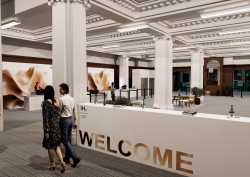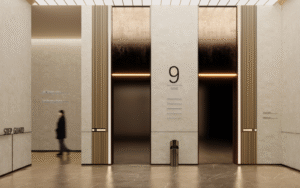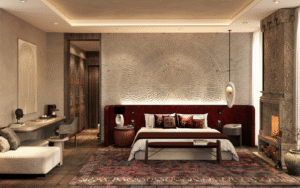As the host of Travel By Design, a podcast brought to you by Marriott Bonvoy Traveler, Hamish Kilburn travelled to Marriott International’s headquarters, in Bethesda, USA. While visiting, as well as staying in a suite with a disappearing bed, he met a handful of the visionaries who are designing next-generation hotel rooms and concepts…

“Everything you are about to see, behind these doors, is ‘top secret’.” These are the words that every journalist and editor longs to hear. I was in Washington – in a place called Bethesda – on a ‘mission’ to explore something new – something undiscovered – for the listeners of Travel By Design, the travel and design podcast I host for Marriott Bonvoy Traveler. Jeff Voris, Senior Vice President at Marriott International, greeted me at my hotel door with a smirk on his face. It was then when I realised that this was not going to be a standard hotel review.
Allow me to set the scene. A months ago, when planning the episodes of the current series of the podcast, to my utter disbelief, my producer told me that Marriott International were basically giving me the keys to their headquarters for the day – and it was my job to explore what hidden gems lurked in between the corridors of design labs, prototype rooms and, wait for it, a fully functional hotel.
Listen to the full 12-minute episode here:
So, with that, I packed my bags and, before I knew it, I was checking in to Room 401, the group’s prototype hotel suite that operates inside its flagship hotel, Marriott Bethesda Downtown at Marriott HQ. Voris gave me a tour inside but didn’t say anything as he captured my first impressions. The room was minimalist, contemporary yet cost, but something was missing. The bed. His grin widened as he sensed by confusion. He pressed a button on a control panel next to the sofa. And then it happened. The bed descended from the ceiling to sit on top of the sofa – and the back of the sofa became part of the headboard.
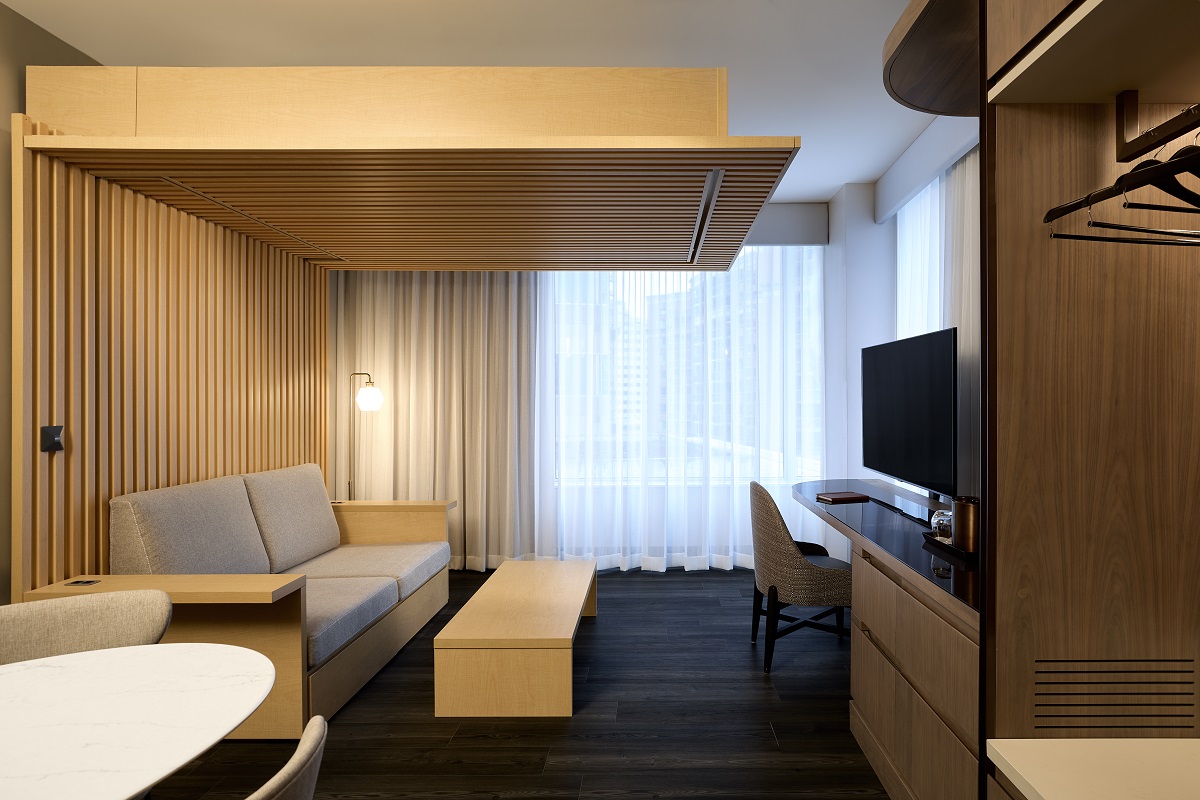
Image credit: Marriott International
To some, this concept might be a tech leap too far. However, in an industry where inches matter, the idea of a ‘disappearing bed’ becomes a space-saving solution. While it may not be the cure for all brands, I can certainly see the appeal for many lifestyle hotels that want to edge out and offer something different. “This was inspired from guest insight,” Voris said. “The way you experience a space is not necessarily by square footage, but rather by circulation space.”
What resonated loudly in that moment was Marriott’s non-prescriptive approach to research. As well as looking at data and science, the design team were just as interested in hearing real human feedback. Room 401 is an ever-changing space, a real suite where Voris and his team can test out bold, new ideas and receive true and trusted qualitive research in return.
My future-gazing experience into the hotel design industry had just begun. The next day, I met Jason Robertson, Vice President of Global Design Innovation at Marriott, inside the group’s ‘maker’s space’ – think Willy Wonka’s Chocolate Factory. Inside the secret design lab, I’m told that the team can make a ‘test room’ in a single afternoon.
The first version of any room concept is created out of white foam core, filled with real furniture. I’m instantly struck by how, despite technological advances, this very analogue approach is still so embraced and a critical part of the innovation process. “There are lots of things that you can do digitally that feel very different when you get into the physical space,” Robertson explained. “Here, you can put on a headset that shows you what the end room would look like, while standing inside this unfinished room to feel like you are in the space. The ability to sit and stand in that space is critical. We all have a sense called proprioception, which essentially tells us whether a space feels claustrophobic or expansive. That’s important to establish early on, because measurements between spaces really matter in our business.”
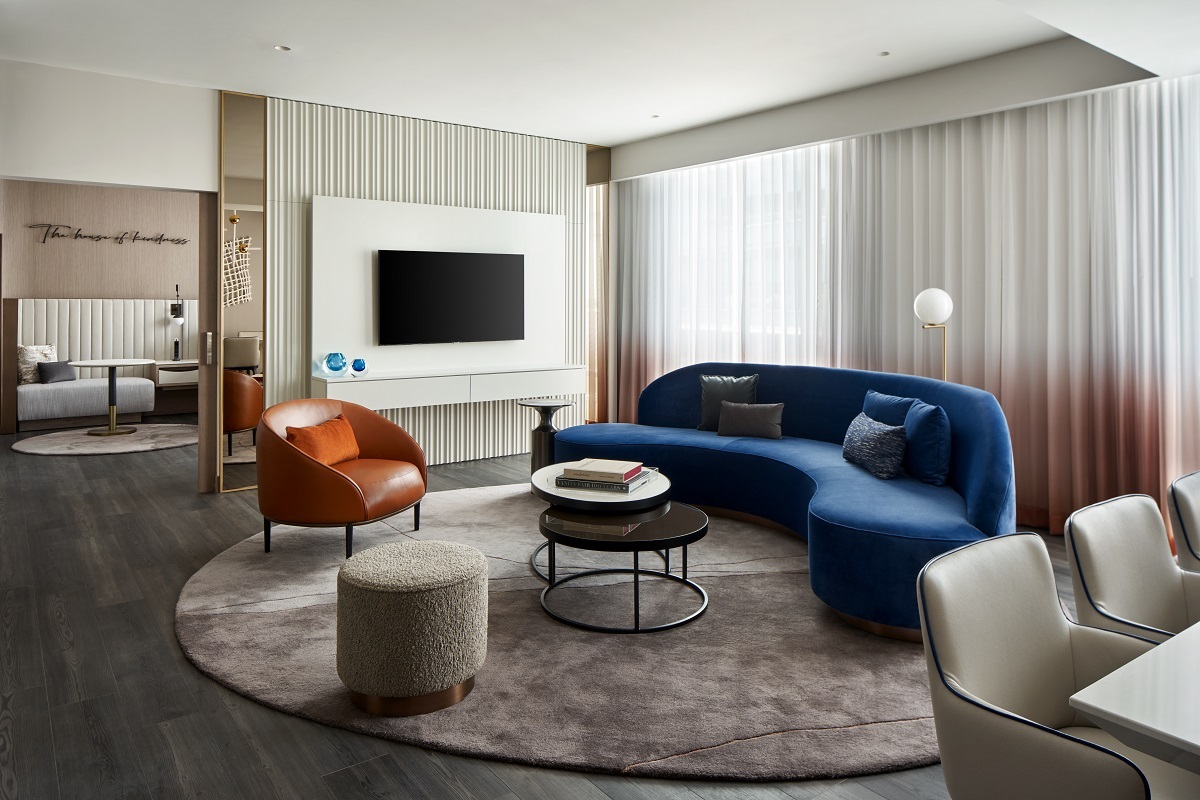
Image credit: Marriott International
After understanding how drawings became physical concepts, it was time to see the result of the extensive research and development. Back inside the hotel, the lift doors shut and we headed up to ‘Floor 57’, another secret area of the hotel that is off-limits to guests checking in. Behind two understated double doors, which to many would just look like doors to back-of-house areas, are where 13 prototype hotel rooms are sheltered. At the time of my visit, and where I met yet more designers who are the brains behind these prototype rooms that are about to be released.
But I have already said too much… to understand what sets these rooms and suites aside from others in the industry – to explore the design details – and to listen to the interviews between their creators, listen to Travel By Design.
The full 12-minute episode, featuring interviews with Jeff Voris, Senior Vice President of Global Design Strategies at Marriott; Jason Robertson, Vice President of Global Design Innovation at Marriott; Aliya Khan, Vice President of Global Design strategies at Marriott and Editor Hamish Kilburn, is available listen to on Travel By Design, wherever you get your podcasts from.
Main image credit: Marriott International







